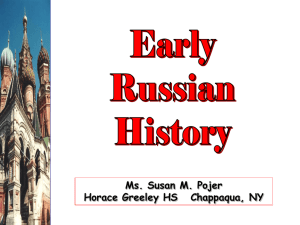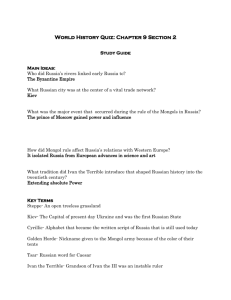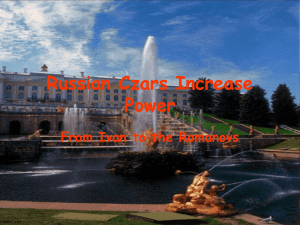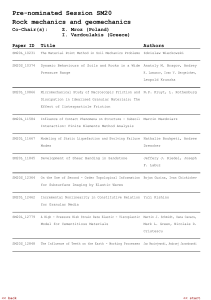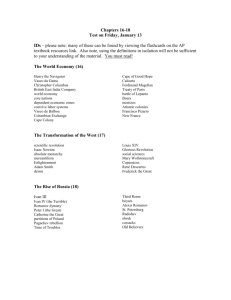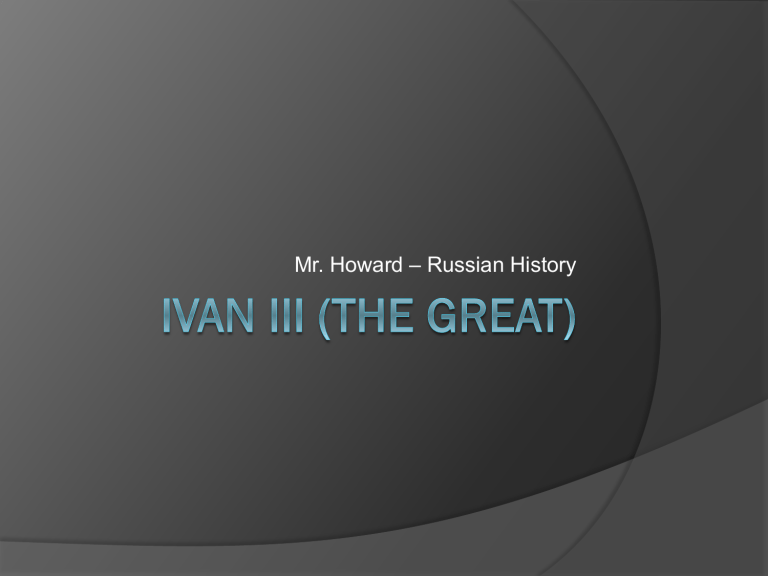
Mr. Howard – Russian History Vocabulary Boyars – wealthy Russian citizens (aristocrats) Cossacks – Horse backed soldiers and pastoralist nomads that quickly took over land in Eastern Russia. Pomestie – granting land to soldiers in exchange for loyalty & defense Gentry Class – soldiers that were given money and land to fight for Ivan. Ivan III “Moreover he was so hostile toward women that if any woman met him by chance, they almost fainted with terror at the sight of him. No access was allowed to him for poor men who were oppressed by the wealthy. He generally drank so excessively at dinner as to fall asleep and as guests were all struck with terror and sitting in silence he would awake, rub his eyes and begin to make merry with them.” - envoy of the Holy Roman Emperor Ivan III Vasiliy II of Moscow * Died of wasting disease * Burning wood cure / infection Ivan III ascended to the throne at 22 * Political prisoner at 6 * Joint ruler with his father at 8 * Married Princess Maria of Tver at 12 * Led first military expedition at 12 Ivan III Ivan III achieved many things He overthrew the Mongols and ran them out of Russia He consolidated power and land He weakened the boyars power (Nevsky) He imported italian culture & building projects Expanding Russia How did Ivan do it? Inheritance – or so he claims When a prince or royal of a nearby land died – hey, I’m related to that guy (or something like that). He acquired large principalities of Vereia, Beloozero, Yaroslav, Rostov, Tver and the city state of Viatka and Riazan. He also acquired Kazan through a combination of force and inheritance. Give it to me. Come on you know you wanna. Okay, I’ll just take it. Ivan III Ivan III used Cossacks to take Kazan – fast moving soldiers that were also skilled traders. Novgorod – Vasily I (Ivans GF) acquired them – they tested Ivan III by signing over control to Lithuanians. By this time Ivan III had brought in foundries and equipped most of his army with early firearms. Ivan vs Novgorod 1471 / 1473 / 1475 / 1478 Ivan, a student of history, used a trick popularized by Marius & Sulla in Rome. Pomestie – land tenure defense After dealing with Novgorod for a 4th time, Ivan went in and stripped all Boyars of their wealth and land. He took over three million acres of land and untold fortunes. Ivan vs Novgorod His longterm solution to Novgorod – fuhgidabout the boyars. This put boyars all throughout Russia on notice – huge power grab by Ivan. He replaced boyars in Novgorod with a gentry class that owed their wealth to Ivan. This gentry class would become the backbone of the Russian military for 3 centuries – Cossacks. Ivan’s Sudebnik Eliminated feudal rule – weakened Boyars Made it illegal to speak against the Tsar – penalty was death and forfeiture of lands and wealth Centralized the government around Ivan Everyone pays taxes to Ivan III Enforced by his gentry army This was the beginning of Tsarist Russia Ivan III – Transforming Russia into Third Rome Proclaimed himself “Gosudar” – prelude to Tsar. Married Sophia Paleologue (Byzantine Princess) related to Constantine XI Adopted the “bicapitate eagle” as Russian standard. Eventually adopted the title of Tsar or Caesar Developed the Doctrine of “Moscow the Third Rome” Third Rome Byzantium fell in 1453 – Ivan III seized this as an opportunity to make Russia the new ‘Rome.’ He adopted their dress, their ceremonies and their government structure (Emperor = Tsar) Western Rome had fallen in the 6th century, Eastern Rome had fallen in the 15th – Russia would be the next and final Rome. A safe place for Catholocism and Orthodoxy. Third Rome To complete this he brought in Italian (Roman) architects to design Russian buildings. He commissioned one of the largest building projects in the history of Russia. Dormition Cathedral * Dormition Cathedral – where Tsars are crowned * Created by Aristotele Fioravanti * Originally started early in Ivan’s reign by Russian engineers – it collapsed. * Fioravanti was able to complete it in less than 5 years. * One of the holiest sites for all of Eastern Orthodoxy to this day. Cathedral of the Archangel Michael * Italian structure – limestone, gold and silver domes * The final resting place for Russia’s Tsars (46 of them) * Built by Alevisio Lamberti da Montagna Cathedral of the Annunciation * Much smaller than the other two churches * Private church for the Tsar and his/her family * Baptisms, marriages and funerals occurred here * Decorated by artwork by Andrei Rublev * Built by Russian engineers but ordered to be built in the Italian style * Steel supports, gold domes and peaks Ivan the Great Bell Tower * Replaced a smaller bell tower dedicated to Ivan Kalita (I) * One of the tallest buildings in the world at the time – the tallest in Russia * Dedicated to Ivan the Great Italian architecture Palace of Facets * The only surviving palace from this period – most were destroyed and/or rebuilt * This was the main banquet hall for Tsars * It is still used as an official reception room for Putin (Russias President) * Italian in style – replaced wooden residence and banquet halls Ivan III’s building projects In total Ivan III planned, had built or oversaw 48 different building projects. The modern day Kremlin – despite new buildings and some being rebuilt – was all started and erected in its modern state by Ivan III. He had military engineers with italian influence build walls around the Kremlin – with narrow chokepoints if you breached the walls. It was meant as a sign – We are the third Rome and this proves it. Battle of the Ugra River • 1480 – Akhmat vs Ivan III • Akhmat was dispirited by the Russian’s firearms and retreated backward to rally support • Ivan III agreed to “ceasefire” because he wanted to repair the relationships he had damaged (brothers, boyars) and rally more troops (Crimea) • Ivan III was reinforced within (17 days) • Akhmat was never reinforced • Ivan III decided to not cross the river but instead to send Akhmat a treaty. • Turn south, never come back and no tribute will ever be paid again • Akhmat never formally agrees (no power) but he turns South and retreats • Seen as the end of the Tatar Yoke in Russian History • Russia is liberated – Ivan III despite all of his harsh changes is celebrated as a liberator War with Lithuania As a result of his defensive and offensive pact with Crimea, after the Battle of the Ugra Ivan III had to declare war on Lithuania. This would result in three separate wars that can be summed up like so: Russia won – peace for two years – Lithuania rebellion Ivan finally ended this the same way he had dealt with Novgorod previously War with Lithuania Most in Lithuania were 1) Russian by race and 2) Orthodox by religion The aristocrats were European Ivan felt like he could divide and conquer He went in and defeated Lithuania, took lands and money and disbursed it to those who were Russian Orthodox Christians in exchange for military service. War with Lithuania By 1492 Ivan III had acquired half of Lithuania this way. New King Alexander of Lithuania sought a treaty. Russia keeps all lands they currently have Alexander marries Ivan’s daughter Yelena. Ivan III was acknowledged as sovereign of all Russian lands Lithuania became a puppet state for Russia
